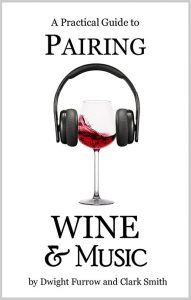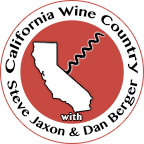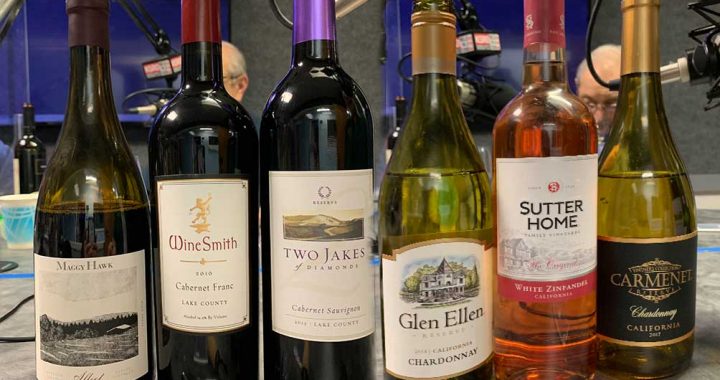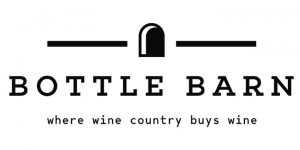Podcast: Play in new window | Download (Duration: 34:39 — 15.9MB) | Embed
Subscribe: Apple Podcasts | RSS | More
Clark Smith joins Steve Jaxon, Dan Berger and Harry Duke on California Wine Country to discuss his book on pairing wine with music. This episode was originally recorded December 8, 2021.
This is the last week of Summer vacation for The Drive and California Wine Country. This is the last repeat episode before next week. Starting Monday August 21, The Drive returns to live radio, on Wine Country Radio 95.5 FM, Mon-Fri 3-6. California Wine Country moves to Fridays so our next podcast episode and the first new live show of the Fall season will be Friday, August 25.
 Clark Smith joins Steve Jaxon, Dan Berger and Harry Duke on California Wine Country to discuss his book on pairing wine with music. He has published a book called A Practical Guide to Pairing Wine and Music. Clark has been on California Wine Country a few times before, including this most recent episode on September 15 of 2021. Today Clark Smith will tell about his book and his website dedicated to pairing wine with music.
Clark Smith joins Steve Jaxon, Dan Berger and Harry Duke on California Wine Country to discuss his book on pairing wine with music. He has published a book called A Practical Guide to Pairing Wine and Music. Clark has been on California Wine Country a few times before, including this most recent episode on September 15 of 2021. Today Clark Smith will tell about his book and his website dedicated to pairing wine with music.
But before we begin with Clark, we will taste a bottle from Dan Berger’s extensive personal cellar. This is a 2004 Peter Lehman Shiraz from Australia. It is a bit rich and has some plum flavors. At 17 years old and is past its prime as it was lost in the cellar and Dan forgot about it.
Euro-Centric Wines
Clark Smith is back with us on California Wine Country today. He is a consultant to about 120 wineries, after a whole career training wine makers. European wines are his favorites, when they are balanced and age well. He calls that “Euro-centric wines.” He likes to say that he makes American “forgeries” of European styles. Today we will taste his Cabernet Franc which is a good example of that. He also likes to use an American grape called Norton.
Clark Smith has published a book on this subject, called A Practical Guide to Pairing Wine and Music, which is available as a Kindle book on amazon, at that link.
Wines are like music.
They are liquid music.
They can carry emotion.
Wines are happy and sad too.
For example: If you want to make a Cabernet Sauvignon taste terrible, play a polka. Cabernets are dark and angry and if you play happy music around it, it will taste awful.
A Sound Wheel, Maybe?
 Clark Smith credits Don Blackburn for coming up with this idea. Dan is a friend of Clark Smith and he didn’t like the Aroma Wheel approach as a framework for the flavors of wine. He wants to look at the whole wine. He did an experiment with about 100 people, and he gives people 3 wines, a Beaujolais Nouveau, a Pinot Noir from Burgundy and a big bad Cab. Then he played the following music:
Clark Smith credits Don Blackburn for coming up with this idea. Dan is a friend of Clark Smith and he didn’t like the Aroma Wheel approach as a framework for the flavors of wine. He wants to look at the whole wine. He did an experiment with about 100 people, and he gives people 3 wines, a Beaujolais Nouveau, a Pinot Noir from Burgundy and a big bad Cab. Then he played the following music:
– a Mozart divertimento, in the Classical style (late eighteenth century)
– a Franz Liszt piece for piano (mid-nineteenth century)
– Carl Orff’s Carmina Burana, a heavy chanting and rhythmic D minor jam for chorus and orchestra (mid-twentieth century)
Then he asked people to match the wines to the music. If it had been random, the assignments would have been about evenly distributed among the wines. But people put the light frilly music with the Beaujolais and the Carmina Burana with the Cabernet.
That’s an intellectual exercise. But then, try playing the Carmina Burana with the Beaujolais, and it tasted horrible. What it means is that the feeling in the music and the wine can be aligned, or misaligned, and you can sense that. For the rest of this very interesting episode, we hear music and taste wine and compare the sensations of the pairings.


